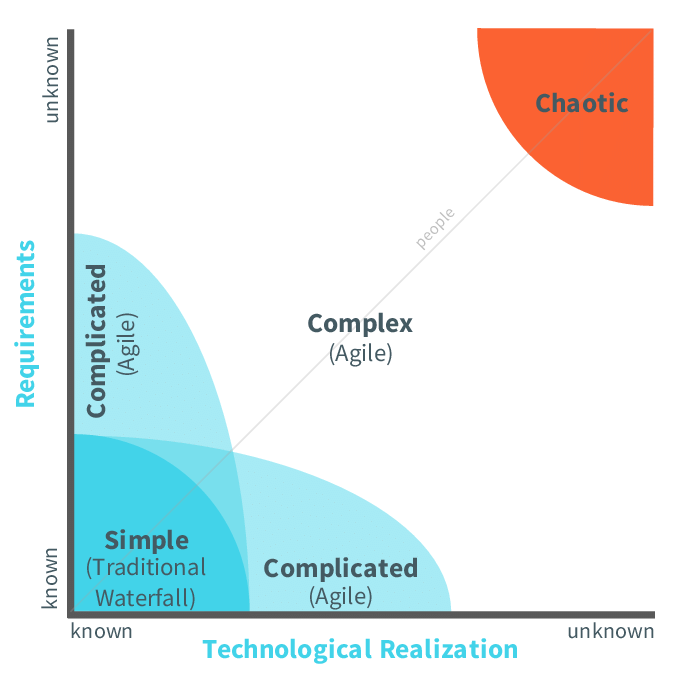What is The Stacey Matrix?
The Stacey Matrix, developed by Ralph Stacey, is a contingency-based approach to decision making. A decision is based upon two variables:
- Certainty (Cause and Effect of Decision)
- Agreement (Extent of Agreement among Stakeholders)
What is the Degree of Certainty?
- Close to Certainty: When underlying cause and effect relationships are clear, past experiences well applicable, and the outcomes predictable.
- Far from Certainty: When underlying cause and effect relationships are unclear, past experiences irrelevant, and the outcomes unpredictable.

What is the Degree of Agreement Among Stakeholders?
- Close to agreement: When the key stakeholders involved in an issue or decision are aligned in terms of values, interests, and objectives, etc., or are close enough to find common ground to move forward.
- Far from agreement: When the key stakeholders involved in an issue or decision are in conflict and are too far apart to find common ground to move forward.
What are the Zones in the Stacey Matrix?
There are five zones within the two axes:
SIMPLE ZONE: close to agreement, close to certainty.
- There is little complication or complexity in the situation. Managers should focus on strong implementation while adhering to best practices; they need to make sure to gather all the facts about the situation and be willing to adapt reaction should the situation change.
POLITICAL ZONE: Far from agreement, close to certainty.
- Managers need to create the conditions for key stakeholders to explore where and how to find common ground. This can be accomplished by creating space for negotiation and dialogue so that stakeholders can reach compromise and see a “win-win” path forward. The best solution in political situations is the one that’s acceptable for all stakeholders.
COMPLICATED ZONE: Close to agreement, far from certainty.
- Managers rely on experts who possess vast knowledge and experience about the cause-and-effect relationships and who know what has been tried in the past. With enough time and resources, they can often find multiple possible solutions through creative thinking, experimentation, and debate.
COMPLEX ZONE: somewhat far from both agreement and certainty.
- Manager can draw upon best practice and expertise to resolve complex issues. Effective solutions can only be found with creativity, innovation and through experimenting with responses that reveal the underlying cause and effect patterns of the challenge. Adaptability and agility are key skills here, for manager, team members and stakeholders alike.
CHAOTIC ZONE: far from agreement, far from certainty
- Managers have to assess the situation based on whatever information they can muster, create clear communication channels between everyone involved, mobilize available stakeholders to do whatever works to stabilize the situation right away, and address the most threatening aspects of the crisis first (and develop a more systematic response later on when the situation is under control).
